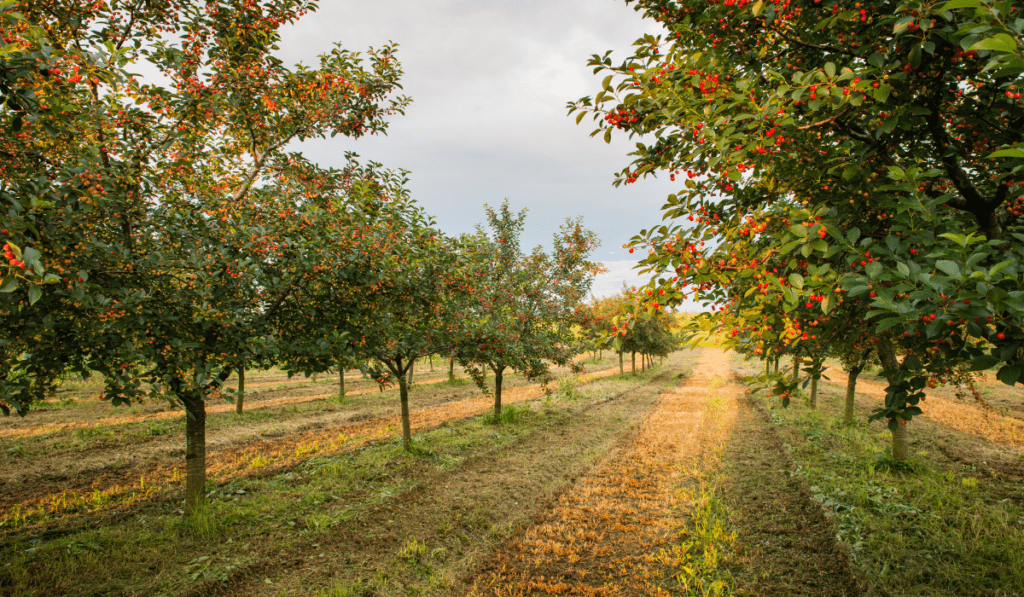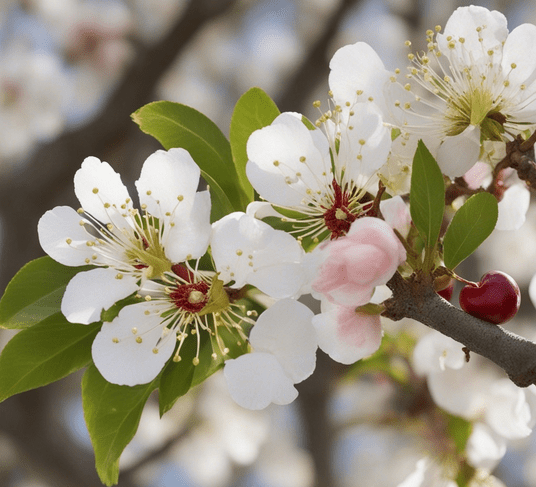Welcome to the world of cherry tree cultivation, where the art of proper spacing holds the key to a flourishing orchard. As an SEO Content Master with a decade of experience, join me on this journey to unravel the secrets of optimizing space for cherry trees. This comprehensive guide empowers you with the knowledge needed to ensure ample room for growth, productivity, and a bountiful harvest.
Section 1: The Importance of Proper Spacing for Cherry Trees
Impact on Growth and Development
Proper spacing is the cornerstone of cherry tree growth. It prevents competition for essential resources like water and nutrients, fostering healthy root development. Adequate space also facilitates better air circulation, reducing the risk of diseases and promoting overall tree vigor. For optimal growth, aim for a balance between trees that allows each to thrive individually.
Yield Optimization
The relationship between proper spacing and increased yield is symbiotic. Ample space ensures optimal sunlight exposure for each tree, a crucial factor in fruit production. By understanding and implementing proper spacing, you set the stage for a balance that encourages robust growth while maximizing the potential harvest. It’s a strategic investment in the long-term productivity of your orchard.
Section 2: Factors Influencing Spacing Decisions
Cherry Tree Varieties
Tailor your spacing decisions to the specific requirements of cherry tree varieties. Varieties like Bing, Rainier, and Stella exhibit unique growth habits and characteristics. Understanding these differences allows you to arrange your orchard spaciously, ensuring that each variety thrives in its designated space.
Soil and Site Considerations
The soil and site characteristics of your orchard significantly influence spacing decisions. Assess factors such as soil drainage, pH levels, and sunlight exposure. By considering these elements, you can make informed decisions about the placement of your cherry trees, optimizing their growth conditions. Conduct a thorough analysis to create an environment that supports healthy root development and overall tree vitality.
Section 3: Calculating Optimal Spacing for Cherry Trees
Tree-to-Tree Spacing Guidelines
Industry-standard guidelines provide insights into the recommended distances between individual cherry trees. These guidelines ensure that trees have enough space for lateral growth, preventing overcrowding and promoting healthy development. Typically, cherries are spaced around 20 to 25 feet apart to allow ample room for their mature spread.
Row Spacing Considerations
Row spacing is a crucial aspect of orchard management. The distance between rows impacts various activities such as harvesting, pruning, and pest control. Consider factors like the expected size of mature trees, equipment accessibility, and sunlight penetration. Strategic row spacing is essential for creating an orchard layout that is both functional and conducive to optimal tree growth.
Section 4: Best Practices for Orchestrating Cherry Tree Spacing
Planting Techniques for Proper Spacing
Effective planting techniques are fundamental to ensuring optimal spacing in your cherry orchard. Consider factors like the size of the root ball, depth of planting, and soil amendments. These factors contribute to uniform spacing throughout the orchard, laying the foundation for a well-spaced and thriving cherry orchard. Follow recommended planting distances and methods to create an environment that promotes healthy root development.
Maintenance Strategies for Established Orchards
As your orchard matures, ongoing maintenance becomes crucial. Regular pruning is a key practice in managing spacing, ensuring that branches have enough room to spread. Canopy management techniques, such as thinning, help maintain proper sunlight exposure. Adjustments to spacing may be necessary as trees grow, ensuring they have ample room to reach their full potential. These maintenance strategies contribute to the long-term health and productivity of your cherry orchard.
Section 5: Troubleshooting Common Spacing Challenges
Overcrowding Issues
Identify and troubleshoot common challenges related to improper spacing and overcrowding. Signs of stress in cherry trees, such as stunted growth or reduced fruit production, may indicate inadequate spacing. In such cases, consider thinning out crowded areas, providing each tree with the necessary space to thrive. Regular monitoring allows for early intervention and prevention of more significant spacing issues.
Disease and Pest Management
Proper spacing contributes to disease prevention, as crowded trees are more susceptible to pathogens and pests. The increased airflow around well-spaced trees minimizes the risk of fungal diseases. Implement preventative measures such as regular inspections, proper sanitation, and the use of organic solutions to address potential pest issues. A healthy, well-spaced orchard is more resilient to diseases and pests, reducing the need for chemical interventions.
Conclusion:
As you embark on the journey of creating a thriving cherry orchard, let this guide be your companion in navigating the intricacies of proper spacing. May your orchard flourish with healthy trees, vibrant blooms, and succulent fruits. Happy planting!



